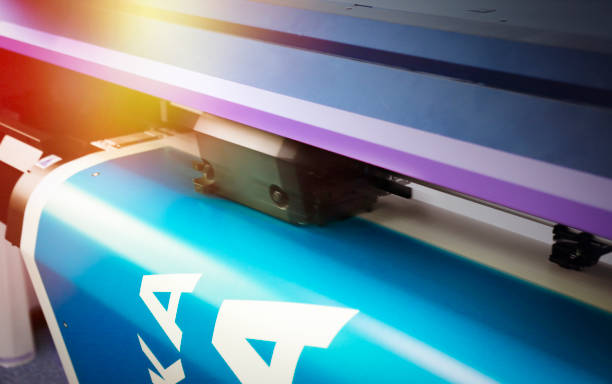Table of Contents:
- How Direct-to-Film Printing Works
- Benefits of Direct-to-Film Printing
- Common Applications
- Choosing the Right Equipment
- Tips for Best Results
- Potential Challenges and How to Overcome Them
- The Future of Direct-to-Film Printing
Direct-to-film (DTF) printing is a revolutionary technology in the custom apparel and textile decoration industry, offering high-quality, full-color designs on various fabrics. It’s a straightforward process that involves printing onto a special film, applying adhesive powder, and heat-transferring to fabric, making it accessible for small businesses and large-scale operations. DTF supports detailed, durable prints on cotton and polyester blends, making it a popular choice for efficiency, flexibility, and creative possibilities in garment printing.
Direct-to-film (DTF) printing undeniably reshapes the fabric and apparel industry with its groundbreaking capabilities. As a superior method for decorating textiles, it offers unprecedented accuracy and versatility. What sets DTF apart is its ability to cater to both small and large-scale businesses and its capacity to deliver top-tier results consistently. For companies and crafters looking to enhance their printing repertoire, integrating a commercial DTF printer is a strategic move that promises to streamline workflows while elevating print quality. As each year passes, more are recognizing DTF’s vast potential, thanks in part to relentless technological advancements that make this method more accessible and efficient.
How Direct-to-Film Printing Works
The success of DTF printing hinges on its straightforward yet sophisticated technique. The process begins with crafting a digital design, which is then meticulously printed onto a specialized PET film using a DTF printer. Post-printing, an adhesive powder is evenly sprinkled over the film’s printed areas, ensuring the design will transfer flawlessly to textile surfaces. The subsequent step involves applying heat and pressure using a heat press, firmly adhering the design to the fabric. What truly elevates the basic principles of DTF printing is its effortless nature, eschewing the prolonged setups of traditional techniques. This streamlined process allows everyone, from enthusiasts to professional printers, to achieve consistently high-quality results without unnecessary complexity, thereby democratizing access to superior textile decoration.
Benefits of Direct-to-Film Printing
Direct-to-Film (DTF) printing offers several benefits, including cost-efficiency, versatility, and high-quality assurance. The solution is cost-effective, eliminating the need for costly screen setups, making it suitable for businesses of all sizes. DTF printing can handle fabrics like cotton, polyester, and blends, catering to diverse needs across industries like fashion, promotional items, and athletic wear. Its technology ensures high vibrancy and longevity, allowing brands to promise fashionable and durable garments to customers. This quality assurance boosts consumer trust and brand reputation. DTF’s benefits align with the evolving demands in the textile industry, where speed, customization, and quality are crucial. Industry trends reflect the growing preference for DTF, highlighting its role as a transformative tool in modern textile production.
Common Applications
The range of applications for Direct-to-Film printing is vast, rendering it a versatile solution for numerous sectors. In the realm of apparel, DTF is perfect for creating custom garments like T-shirts, hoodies, and sports jerseys that require detailed graphics and quick turnaround times. The promotional goods sector also benefits significantly, where DTF printing suits the production of eye-catching merchandise that stands out. In personalized apparel, offering intricate designs without setup fees is a boon for small-run fashion lines and bespoke garment shops. Beyond clothing, DTF finds utility in home décor, crafting bespoke cushions and textile art, demonstrating its potential to revolutionize how creativity and commerce intersect.
Choosing the Right Equipment
Selecting the right DTF printing equipment is paramount to harnessing the full potential of this technology. Factors such as printer resolution, maintenance requirements, and consumable compatibility play essential roles when considering equipment. High-grade DTF printers should ideally accommodate different project volumes, allowing users to expand their offerings as demand grows. Such foresight ensures a robust setup that scales efficiently with production needs. Furthermore, choosing reliable and user-friendly machinery can ease the transition to this advanced printing method, empowering operators to focus more on creativity and less on operational hurdles, thus maximizing productivity and growth.
Tips for Best Results
To achieve optimal results, calibrate equipment regularly, manage workspace cleanliness and humidity levels, and experiment with varying heat and pressure settings across textiles. This ensures optimal performance, maintains color fidelity, and ensures consistent results across print runs. Tailoring these settings optimizes texture and durability for each material type, ensuring optimal print quality. Additionally, maintaining proper film storage conditions helps preserve the integrity of transfer materials and prevents print defects. Regularly inspecting and replacing worn components, such as heat press pads or printer nozzles, can prevent technical issues during production. Documenting successful settings for specific fabric types builds a reliable reference for future projects and enhances overall workflow efficiency.
Potential Challenges and How to Overcome Them
Despite its many advantages, DTF printing is not without its challenges. Issues such as inconsistent color output or bonding failures may arise, typically surmountable through regular equipment maintenance and carefully selecting consumables. Staying informed about the latest troubleshooting techniques and technical advancements can significantly aid in overcoming these obstacles. Engaging with fellow DTF printers and participating in industry forums or workshops can provide valuable insights, ensuring operators possess the knowledge to address and resolve issues swiftly, thus maintaining the reliability and efficiency of their DTF printing processes.
The Future of Direct-to-Film Printing
The advancements poised to reshape Direct-to-Film printing are set to consolidate its place at the forefront of textile printing technologies. As innovations in ink formulations and sustainable materials emerge, DTF will likely further reduce its environmental impact while enhancing print quality. These developments are aligned with the broader industry push towards eco-friendliness, ensuring that DTF remains a pivotal element in sustainable textile production. With its ongoing evolution, DTF stands to meet the increasing consumer demand for high-quality, customizable, and ethically produced garments. As it continues to mature and innovate, DTF printing is well-positioned to remain a leading solution for artists, entrepreneurs, and enterprises aiming to harness modern technology to bring their creative visions to life.


